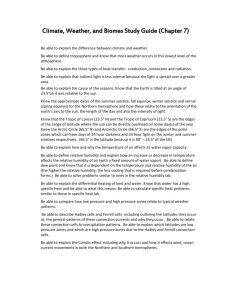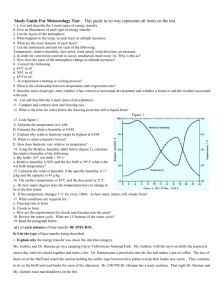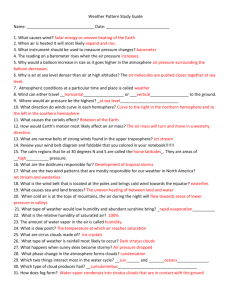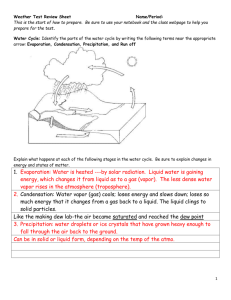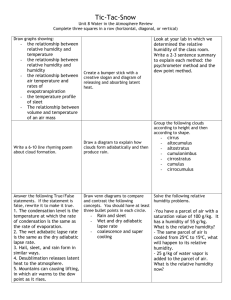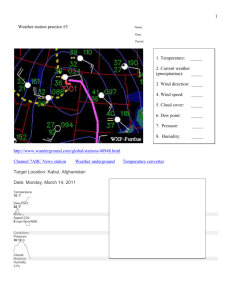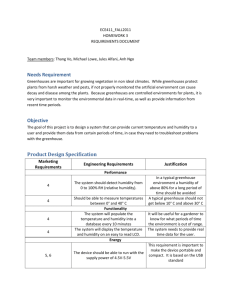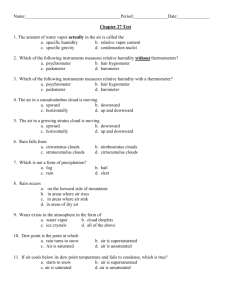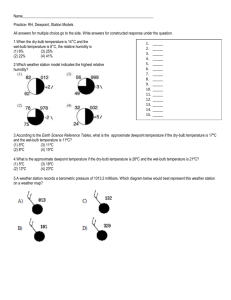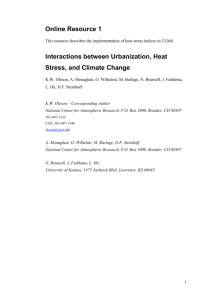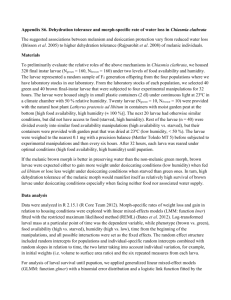Weather and Storms Review
advertisement
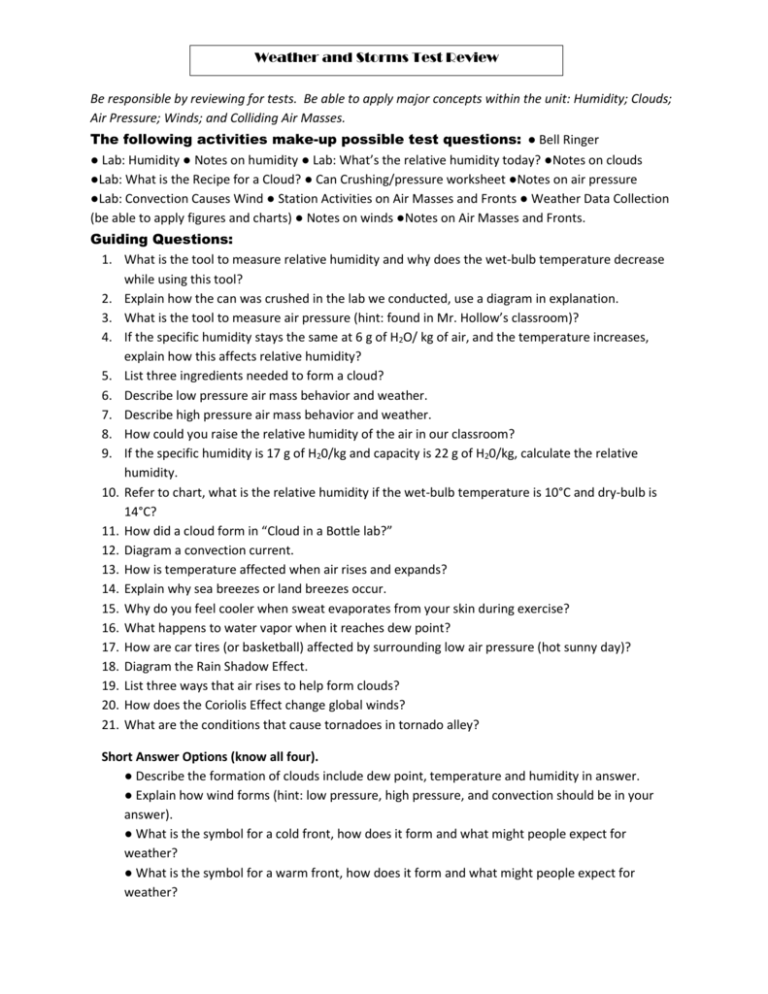
Weather and Storms Test Review Be responsible by reviewing for tests. Be able to apply major concepts within the unit: Humidity; Clouds; Air Pressure; Winds; and Colliding Air Masses. The following activities make-up possible test questions: ● Bell Ringer ● Lab: Humidity ● Notes on humidity ● Lab: What’s the relative humidity today? ●Notes on clouds ●Lab: What is the Recipe for a Cloud? ● Can Crushing/pressure worksheet ●Notes on air pressure ●Lab: Convection Causes Wind ● Station Activities on Air Masses and Fronts ● Weather Data Collection (be able to apply figures and charts) ● Notes on winds ●Notes on Air Masses and Fronts. Guiding Questions: 1. What is the tool to measure relative humidity and why does the wet-bulb temperature decrease while using this tool? 2. Explain how the can was crushed in the lab we conducted, use a diagram in explanation. 3. What is the tool to measure air pressure (hint: found in Mr. Hollow’s classroom)? 4. If the specific humidity stays the same at 6 g of H2O/ kg of air, and the temperature increases, explain how this affects relative humidity? 5. List three ingredients needed to form a cloud? 6. Describe low pressure air mass behavior and weather. 7. Describe high pressure air mass behavior and weather. 8. How could you raise the relative humidity of the air in our classroom? 9. If the specific humidity is 17 g of H20/kg and capacity is 22 g of H20/kg, calculate the relative humidity. 10. Refer to chart, what is the relative humidity if the wet-bulb temperature is 10°C and dry-bulb is 14°C? 11. How did a cloud form in “Cloud in a Bottle lab?” 12. Diagram a convection current. 13. How is temperature affected when air rises and expands? 14. Explain why sea breezes or land breezes occur. 15. Why do you feel cooler when sweat evaporates from your skin during exercise? 16. What happens to water vapor when it reaches dew point? 17. How are car tires (or basketball) affected by surrounding low air pressure (hot sunny day)? 18. Diagram the Rain Shadow Effect. 19. List three ways that air rises to help form clouds? 20. How does the Coriolis Effect change global winds? 21. What are the conditions that cause tornadoes in tornado alley? Short Answer Options (know all four). ● Describe the formation of clouds include dew point, temperature and humidity in answer. ● Explain how wind forms (hint: low pressure, high pressure, and convection should be in your answer). ● What is the symbol for a cold front, how does it form and what might people expect for weather? ● What is the symbol for a warm front, how does it form and what might people expect for weather?
